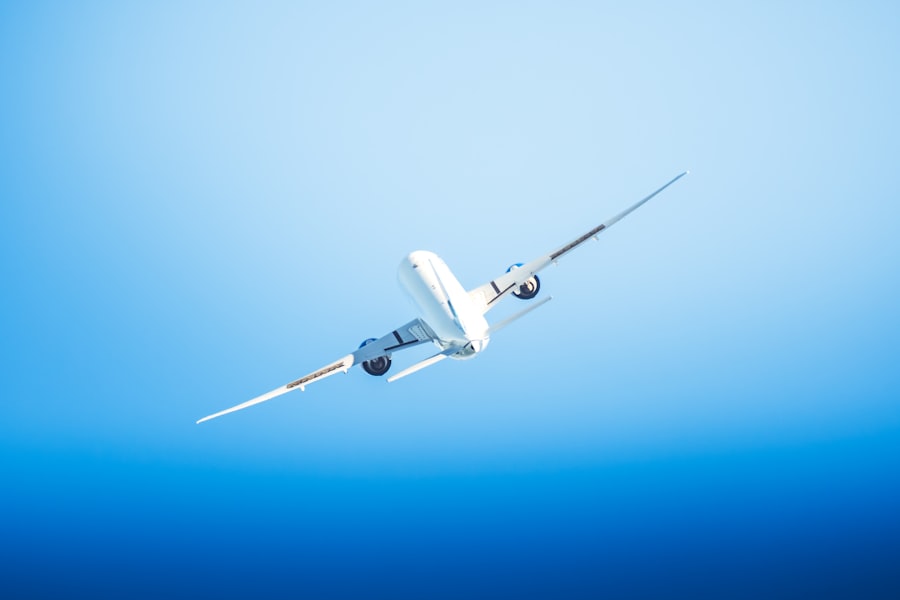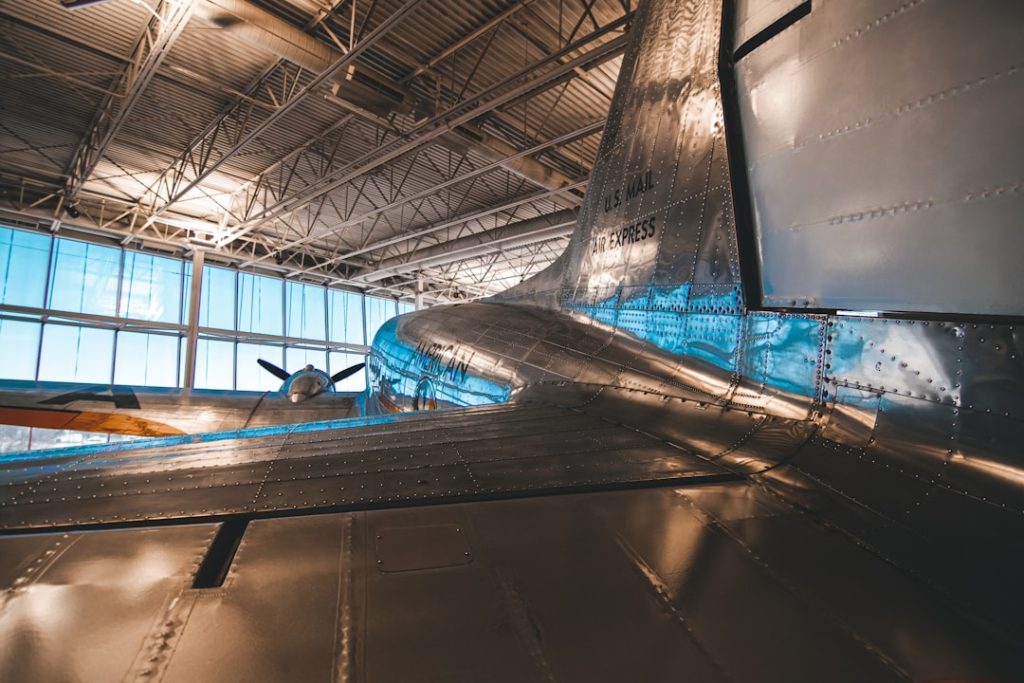The aerospace industry stands on the precipice of a transformative era, characterized by rapid technological advancements and an increasing emphasis on sustainability. As global demand for air travel continues to rise, the sector is compelled to innovate and adapt to new challenges, including environmental concerns and the need for enhanced efficiency. The future of aerospace is not merely about improving existing technologies; it encompasses a holistic approach that integrates cutting-edge research, sustainable practices, and a vision for space exploration that extends beyond our planet.
In this dynamic landscape, the convergence of artificial intelligence, advanced materials, and automation is reshaping how aircraft are designed, manufactured, and operated. The integration of these technologies promises to enhance safety, reduce costs, and improve the overall passenger experience. As we delve deeper into the advancements shaping the future of aerospace, it becomes evident that the industry is not only responding to current demands but is also proactively preparing for a future that may include commercial space travel and interplanetary exploration.
Key Takeaways
- Aerospace technology is rapidly advancing, leading to innovations in aircraft design and sustainable practices.
- Sustainable practices in aerospace are becoming increasingly important for the future of the industry.
- Renewable energy is playing a significant role in the future of aerospace, with a focus on reducing carbon emissions.
- Space exploration and colonization are becoming more feasible with advancements in aerospace technology.
- Despite challenges, there are numerous opportunities for innovation in the aerospace industry, shaping the future of air and space travel.
Advancements in Aerospace Technology
The aerospace sector has witnessed remarkable technological advancements over the past few decades, with innovations that have fundamentally altered aircraft performance and operational efficiency. One of the most significant developments is the advent of fly-by-wire systems, which replace traditional mechanical controls with electronic interfaces. This technology enhances aircraft maneuverability and safety by allowing for more precise control and real-time adjustments based on flight conditions.
Additionally, fly-by-wire systems facilitate the integration of advanced autopilot features, enabling pilots to focus on strategic decision-making rather than routine operations. Another groundbreaking advancement is the use of composite materials in aircraft construction. Composites, such as carbon fiber reinforced polymers, offer a combination of strength and lightweight properties that significantly improve fuel efficiency.
For instance, the Boeing 787 Dreamliner utilizes approximately 50% composite materials in its structure, resulting in a 20% reduction in fuel consumption compared to similar-sized aircraft. This shift towards lighter materials not only enhances performance but also contributes to lower emissions, aligning with the industry’s growing commitment to sustainability.
Sustainable Practices in Aerospace

As environmental concerns take center stage globally, the aerospace industry is increasingly adopting sustainable practices to mitigate its ecological footprint. One of the most pressing issues is carbon emissions from air travel, which contribute significantly to climate change. In response, major airlines and manufacturers are investing in research and development of sustainable aviation fuels (SAFs).
These fuels are derived from renewable resources such as plant materials and waste products, offering a promising alternative to traditional fossil fuels. For example, airlines like KLM and United Airlines have begun incorporating SAFs into their operations, demonstrating a commitment to reducing greenhouse gas emissions. Moreover, the industry is exploring innovative approaches to aircraft design that prioritize energy efficiency.
The implementation of aerodynamic enhancements, such as winglets and advanced engine designs, has proven effective in reducing drag and improving fuel efficiency. The introduction of electric and hybrid-electric propulsion systems represents another significant stride towards sustainability. Companies like Airbus and Boeing are actively developing electric aircraft prototypes that aim to revolutionize short-haul flights by minimizing reliance on conventional jet fuel.
These initiatives reflect a broader trend within aerospace towards embracing environmentally friendly technologies that align with global sustainability goals.
Innovations in Aircraft Design
| Category | Metric | Value |
|---|---|---|
| Efficiency | Fuel Consumption | 20% reduction |
| Performance | Speed | 10% increase |
| Sustainability | Carbon Emissions | 30% reduction |
| Safety | Accident Rate | 50% decrease |
The design of aircraft is undergoing a renaissance driven by advancements in computational fluid dynamics (CFD) and 3D printing technologies. CFD allows engineers to simulate airflow over various aircraft designs, enabling them to optimize shapes for maximum aerodynamic efficiency before physical prototypes are built. This capability not only accelerates the design process but also reduces costs associated with traditional wind tunnel testing.
3D printing, or additive manufacturing, is revolutionizing how components are produced in aerospace. This technology allows for the creation of complex geometries that were previously impossible or prohibitively expensive to manufacture using conventional methods. For instance, GE Aviation has successfully utilized 3D printing to produce fuel nozzles for its LEAP engines, resulting in parts that are lighter and more efficient than their traditionally manufactured counterparts.
The ability to produce components on-demand also streamlines supply chains and reduces waste, further enhancing the sustainability of aircraft manufacturing.
Renewable Energy in Aerospace
The integration of renewable energy sources into aerospace operations is gaining momentum as the industry seeks to reduce its dependence on fossil fuels. Solar energy is emerging as a viable option for powering certain aspects of aviation. For example, solar-powered drones have been developed for various applications, including surveillance and environmental monitoring.
These drones can operate for extended periods without the need for refueling, showcasing the potential of renewable energy in enhancing operational efficiency. Additionally, research into hydrogen fuel cells is advancing rapidly within the aerospace sector. Hydrogen offers a clean alternative to conventional fuels, emitting only water vapor when burned or used in fuel cells.
Companies like ZeroAvia are pioneering hydrogen-powered aircraft prototypes aimed at regional travel markets. By harnessing hydrogen as a fuel source, the aerospace industry could significantly reduce its carbon footprint while maintaining performance standards comparable to traditional jet engines.
Space Exploration and Colonization

The future of aerospace extends beyond Earth’s atmosphere into the realm of space exploration and potential colonization. The renewed interest in space travel has been fueled by advancements in rocket technology and a growing number of private companies entering the market. SpaceX’s reusable Falcon 9 rocket has revolutionized space travel by drastically reducing launch costs and increasing access to orbit.
This innovation has opened up new possibilities for satellite deployment, scientific research, and even crewed missions to Mars. The concept of colonizing other planets is no longer confined to science fiction; it is becoming a tangible goal for organizations like NASA and private enterprises such as Blue Origin. Plans for establishing human settlements on Mars involve not only transportation but also life support systems capable of sustaining human life in harsh extraterrestrial environments.
The development of technologies for in-situ resource utilization (ISRU) will be crucial for long-term colonization efforts, allowing astronauts to utilize local resources for water, oxygen, and building materials.
Challenges and Opportunities in Aerospace Innovation
Despite the promising advancements in aerospace technology and sustainability practices, the industry faces several challenges that must be addressed to fully realize its potential. Regulatory hurdles pose significant obstacles to the rapid deployment of new technologies. The certification process for new aircraft designs and propulsion systems can be lengthy and complex, often delaying innovation.
Striking a balance between ensuring safety and fostering innovation will be critical as the industry navigates this landscape. Moreover, cybersecurity threats present a growing concern as aircraft become increasingly connected through digital systems. The integration of advanced technologies such as artificial intelligence and IoT (Internet of Things) increases vulnerability to cyberattacks that could compromise safety or operational integrity.
Developing robust cybersecurity measures will be essential to protect both commercial aviation and space exploration initiatives from potential threats. Conversely, these challenges also present opportunities for collaboration among stakeholders within the aerospace ecosystem. Partnerships between government agencies, private companies, and research institutions can accelerate innovation by pooling resources and expertise.
Initiatives like NASA’s Artemis program exemplify this collaborative spirit by bringing together various entities to achieve ambitious goals in space exploration.
The Future of Aerospace
The future of aerospace is poised for unprecedented growth driven by technological advancements, sustainability initiatives, and an expanding vision for space exploration. As the industry embraces innovative practices and addresses challenges head-on, it will redefine what is possible in aviation and beyond. The integration of renewable energy sources, advanced materials, and cutting-edge design methodologies will not only enhance operational efficiency but also contribute to a more sustainable future.
As we look ahead, it is clear that the aerospace sector will play a pivotal role in shaping our world—both on Earth and in space. The journey towards this future will require collaboration across disciplines and a commitment to pushing boundaries in pursuit of excellence. With each advancement, we move closer to realizing a vision where air travel is not only efficient but also environmentally responsible, paving the way for humanity’s next great adventure among the stars.


